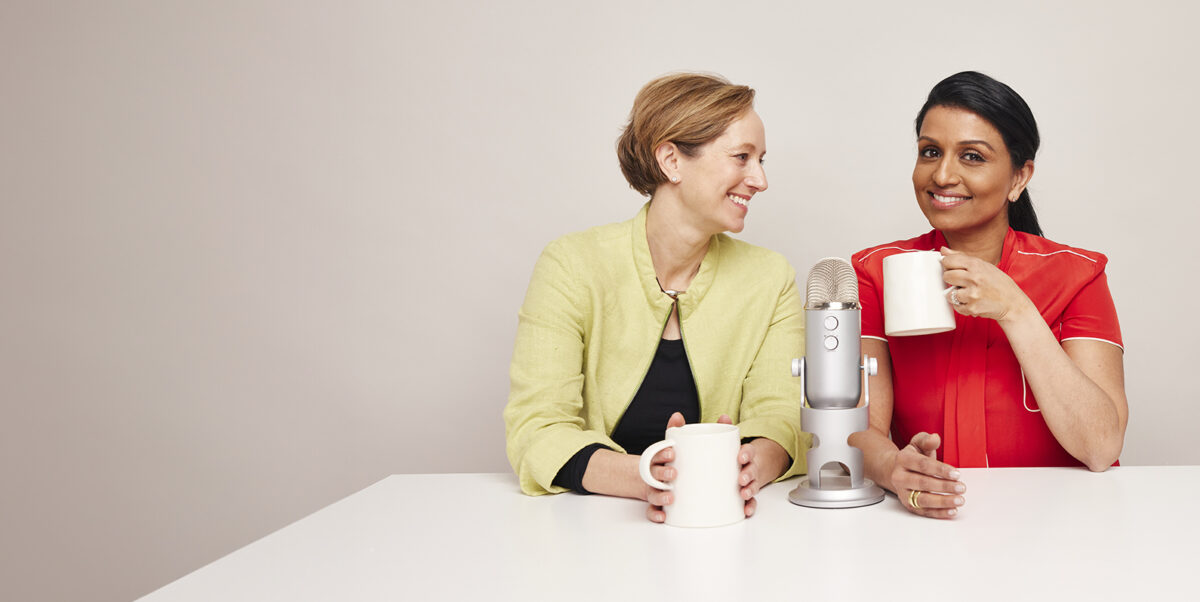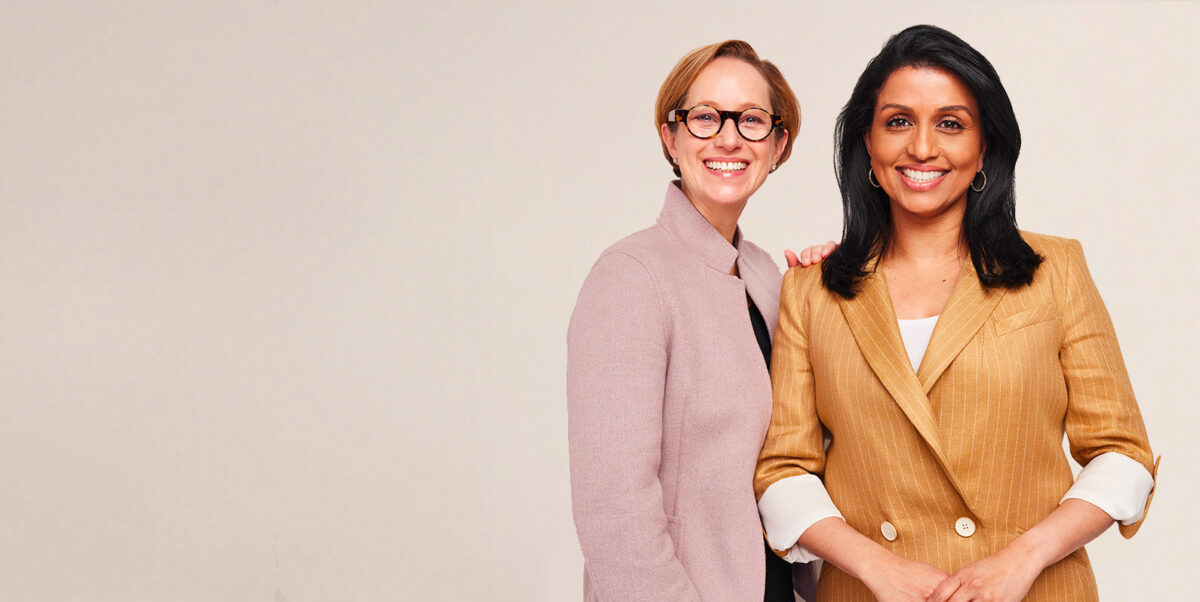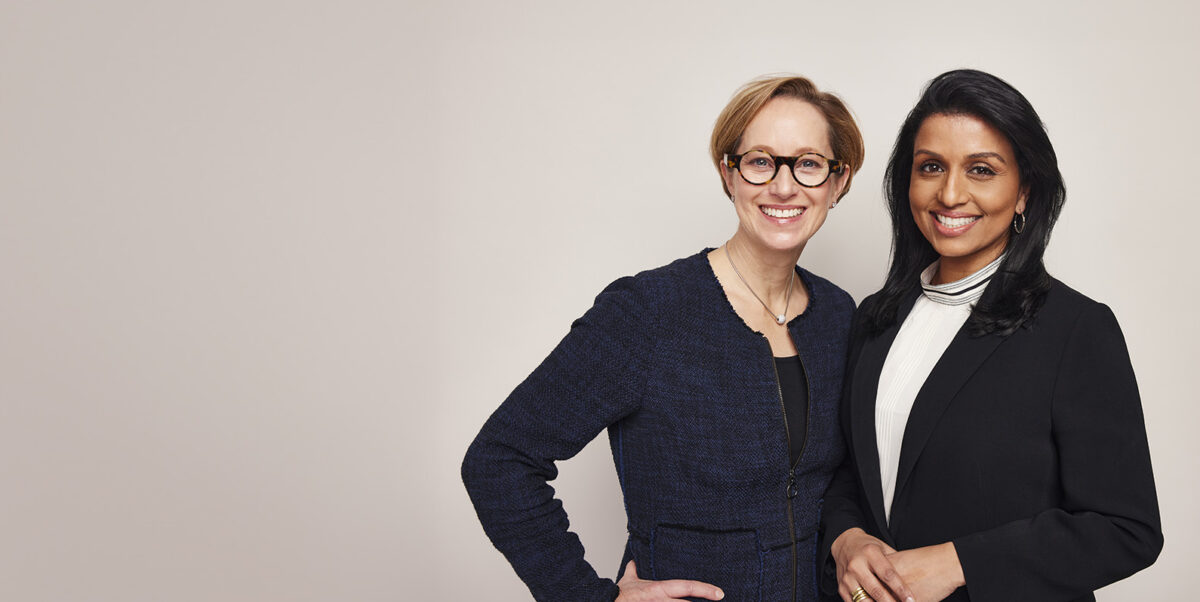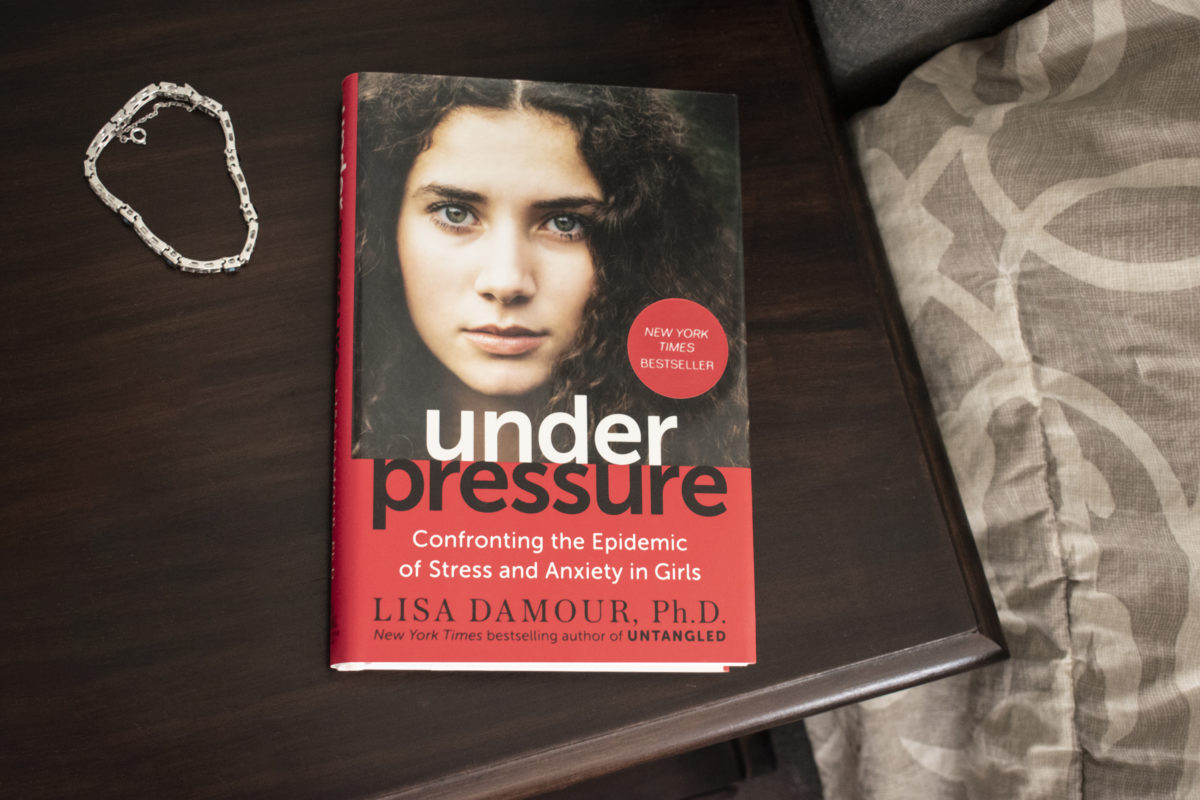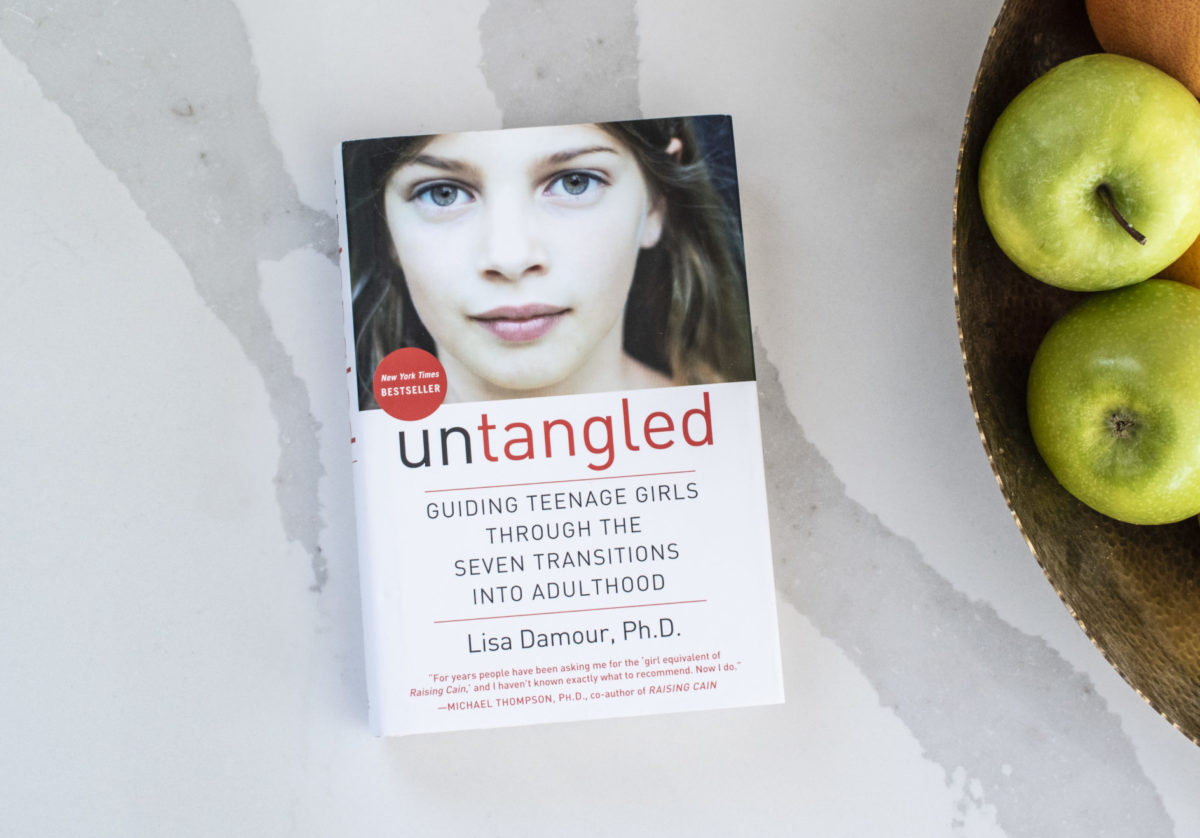How do we encourage our kids to be active when they want to couch surf? Lisa tackles a listener’s question about a tween who has become sedentary during the pandemic. As much of the U.S. is getting back to school—often with distance learning—exercising, eating well, and maintaining routines now matter more than ever. Talking to kids about healthy eating comes with an unexpected lesson from a famous neighborhood—Sesame Street.
September 1, 2020 | 25 min
Transcript | Helping Kids Eat Well and Stay Active Under Covid-19
The Ask Lisa Podcast does not constitute medical advice and is not a substitute for professional mental health advice, diagnosis or treatment. If you have concerns about your child’s well-being, consult a physician or mental health professional.
REENA NINAN: So I went golfing this weeK.
LISA DAMOUR: You did?
REENA: I haven’t golfed in 20 years and it was a clinic. It was me and my girlfriend Jophie and about a dozen men over the age of 62 who haven’t golfed for two decades, essentially. And we get there and they say, pull out your wedge and pull out the putter. And we look at the golf bag, we have no clue which one’s a wedge and which one’s the putter.
LISA: Oh man, golf is having its moment, I think, as one of the very few socially distanced things that works really well.
REENA: I am determined to learn how to play. I’ve signed the kids up as well to learn how to play, and it got me thinking because you know winter, unfortunately is coming, and we’re stuck in the house, you don’t get a lot of opportunities out, and it got me thinking, how do you get kids active, stay active, and as I was thinking about this I was reading through some of the questions that we’re already getting in, and one listener sent this question, I want to pose it to you. It says: “I have a lovely tween girl who just turned 12. She used to be quite active in dance in basketball but since the pandemic, she’s resisted participating in any meaningful physical activity. She rolls her eyes at bike rides or walks, and when I mention that she needs to get up and move for the good of her heart and her mind, she reacts as though we’re implying that she’s fat or ugly. But we just put in a new pool and she even resists swimming much of the time. I’m a mom who never complains or talks about my own body, and when I exercise I’m careful to frame it around health and longevity, not beauty. I just want her to be happy and healthy. I certainly don’t want her feeling like we want her to physically change appearance. What can we do?
LISA: Ah, man. This is a great question and it’s got so many layers and so much detail to it. I’m really grateful to the listener who sent this in. Both because it’s a critically important question and I also know it’s a question a lot of parents have right now about how they help kids be active but not make the whole thing weird, which is really hard to do.
REENA: I mean how do you get kids to be active if they don’t want to be active?
LISA: It’s difficult because they’ve lost all of the normal activity of a lot of their lives, you know the going places, and I think adults have to, you know where we used to drive places and then you walk across the parking lot and you’re at your office in your trekking up and down the hall. So there’s been such a disruption to the normal course of events in the ways that we’re active and people feel kind of down and people may not feel like they’ve got good access to the kinds of ways they used to be active, so it’s a bit of a set up for families, and this mom, it’s so thoughtful the way she asks in that she she mentions that she she doesn’t make it about weight or food or appearance and is really trying to get at the idea that this is part of being healthy and part of what we need to do and she runs smack into a 12-year-old and this is like this is what makes 12-year-olds awesome and also complicated who’s like you’re making about my body and my looks and and so then this poor mother feels stuck because this 12-year-old has found a very effective way to reframe the conversation so that her mother feels that she can’t press it forward, and and that’s a tough thing, that’s a tough thing.
REENA: I love how the mom says she doesn’t make it about her own body she’s careful about phrasing it that way, but what happens? Like every day I take at least a couple walks a day. It really clears my mind, something as basic as walking. wWhy is that physical activity so important for the mind?
LISA: Oh man, that’s a good one. I think that there’s something really powerful that occurs when we move. I know it I know it sounds so basic but that idea of moving and the way I go at it is we are fundamentally designed to move. Humans are not designed to stay in place. And part of the challenge for us and our kids in the context of this pandemic is how much more hemmed in we all feel, and so we need to move. And so then to get to this question that you asked and that on behalf of this moment with this mom about so what did she say to her kid and how did they get out of this impasse where the moms like you need to move in the kids like you’re making about my appearance and the mom feel stuck. One way to get out of the impasse is for the parent to say, look you gotta move. It’s part of being human. You gotta eat. You gotta sleep. You gotta move. You gotta go to the bathroom like these are just you know it comes with the territory but how do you move I’m willing to negotiate. So I’m not gonna tell you, you got to get in the pool. I’m not gonna tell you gotta come to work outs with me, but you moving is the non-negotiable. So come up with how you are going to move, run some options by me and we’ll come to something that makes sense to both of us.
REENA: Shy is that so important? Like I told the kids, you guys are golfing this semester like that’s what we’re doing, and they kicked and screamed, they’re not into it. Why is it so important given them that out?
LISA: Because they’re kids, and especially if they’re teenagers, they do not like to be told what to do. And you can get away with this, it’s actually a really funny thing in development. You can usually get away with this until about age 10. The nice thing about kids under the age of 10 usually is you can be like, go do this, and they’re like I don’t want to, and then you’re like, go do this or I’ll get mad. And then they’re like “Okay fine.” That is how it goes and then at 11 almost, literally it feels like to some parents overnight, kids move into adolescence, which is often earlier than people expect. People think ‘OH teenager I’ve got until they’re 13”. No no no, adolescence begins at 11. It has always begun at 11. I want to get airplanes and fly banners behind the airplanes ‘Adolescence begins at 11’ So what happens is they go into their room. They have a night’s sleep and they wake up the next morning, they’re an adolescent, this is really what it feels like, and the parent’s says ‘Go do this’ and the teenager’s like ‘I don’t want to’ and the parent’s like ‘Go do it or I’ll get mad,’ and the kid’s like ‘well now I’m definitely not doing it.’ So we have to change tactics in those moments.
REENA: So if you, like so my kids right now are are 8 and 9 right so we’re nearing that phase. Are there things you can do it at an early stage or even if your your kids are 15 and 16 that can pivot the conversation to sort of get them to understand where you’re coming from. Is it giving them those outs?
LISA: I think it is saying, look, there are things that have to happen here, but I’ll let you script how they happen. And then you actually have to tolerate what they choose. I can tell you right now a lot of the activity kids are getting are tik tok dances, and that’s activity. They’re up, they’re moving, they’re wiggling their bodies, they’re doing it repeatedly. And the challenge for grown ups is to appreciate that counts. If you’re letting your kid have Tik Tok, Tik Tok dances may be the way they’re getting physical activity and we have to respect that.
REENA: Do you have a Tik Tok account?
LISA: I do not.
REENA: I would love to see you do a Tik Tok dance and put that up on our Instagram account.
LISA: Would that be hysterical?
REENA: That would be great, the Ask Lisa podcast account. But as much as Tik Tok is in the news for so many things, right, I never thought of it as being great for the kids because they’re dancing on the app.
LISA: It’s kind of funny thing about it in that way. But they are moving. They’re wiggling their bodies and there’s some new way that they do it every other week, some wild new dance that they are trying to replicate, which is often pretty funny to watch them do.
REENA: So what would your advice be for this mom then you’re giving her the out to tell her her daughter what to do you know but let let her daughter choose the physical activity but then what?
LISA: Well so what we’re moving into here is the transition into school and with that, the day is going to, I think for some kids become even more sedentary, and for some kids it may become a little bit more active, you know, depending on whether they’re going to school in person or if they’re doing it remotely, or some hybrid. I think that for all parents the transition into the new pattern of the day also gives an opportunity to reboot how time is spent and what kids are doing physically. So the first thing the mom can do is say, look this is a non negotiable but I will negotiate with you about how you’re active. But now we’re in a moment, too, where the patterns of the day are changing, and so maybe some possibilities open up.
REENA: Yeah, this reminds me, I loved by the way your column in The New York times last week, your adolescent column, which you do monthly for The New York Times. It was titled something like the 2020 Back to School List for Teens’ Emotional Wellbeing, and you talk about the importance of routines, which coincidentally a couple weeks ago, we were talking and you were like, oh I’m starting my routine. I want to get everybody into the routines. And I’m thinking, oh my gosh I won’t even get into a routine until like two weeks after the school year. But why is that so important to establish those routines.
LISA: It’s funny because I have become actually sort of obsessed with routines. This summer this has become a very central focus of my thinking, quite to my surprise. In some ways I think like it’s a topic that’s been around for a while but something about the pandemic and the total disruption of our normal routines has made me really interested in the routines that we establish in the absence of what we had before, and so in that column one of the things I recommend that teenagers and really everybody really needs is to take seriously what their routines are. But what’s tricky where people get stuck is that usually when we say routines, what people iamgine are like these like these rigid task masters of where your time is supposed to go. And what I’ve started to really think about is, okay our routine reflects our priorities. It reflects we we’re putting our time, and if we’re giving something time it means that we have made it a priority, whether we’re conscious of it or not, and so let’s build the priorities into the routines. So for instance, this mom wants her kiddo to be active, she herself is active, and so that needs to then be routinized. So part of where they could pivot this is to say, okay school starting and you’re going to school so you’ll be walking to school, so good there’s activity in your routine. Or you’re not going to school so you’re going to be home sitting on your bums all day, we need to build activity into your routine. So the two things can come together and schedules can be made that account for things that need to happen, like sleep and routines and seeing friends safely, all of that, but that’s where the opening comes to reboot this conversation.
REENA: Why are routines so important? Is because like everything right now is just completely out of our control, and it gives you a sense of control? Why do you feel that so strongly about having routines?
LISA: Well that’s part of it, that everything got just thrown into a blender, and at some level we need to actually take control back, so that’s one piece of it. Another is that our old routines actually met a lot of needs that we didn’t think about. So if your kid walked to and from school the old routine put in a lot of activity, and I think for a lot of adults are old routines are places where we saw friends or had sort of you know casual connections with people like someone at the office we said hello to or somebody at the coffee shop. My old routine gave me a lot more time alone. When I was traveling I’d have more privacy and time alone, and I’ve had to work in creating new routines to sort of create some space for myself because I took for granted you know how my old routine built in all these things that I needed. You know what I mean like you for your routine is changed very dramatically.
REENA: Yeah. And I think you’re also taking on, like I wasn’t cooking three meals a day for everybody, you know worried about what to get them feed seven days a week, three meals a day. But it actually got me thinking also, Lisa, about food because that is now also part of our routines, trying to talk, this listener didn’t mention food, but you know talking to our kids about food. I can tell you just personally my sugar intake has risen astronomically during this pandemic. If you want me to give away state secrets just wave Pepperidge Farm Mint Milanos. You don’t have to starve me, you don’t have to torture me, you will get them out, it like that has been my guilty pleasure. I have decided, I know no one’s said this, but I feel with the start of school we are now in phase two of this pandemic, that’s what I’m calling it, phase two. We need to hit the reset button. We need to figure out our activities, routines and eating has been one of them.Trying to figure out meals that are not going to make take me all day to cook, but I still want them to eat healthy. How do I talk to them, for instance, about sugar intake , ike what’s a conversation we need to have with them about food?
LISA: Oh man, this is so big and so important, and I think in most homes we are around food all day. Our kids are around food all day, our kids eat there watching us eat. This has become very loaded in a lot of families. and I want to get to that, but it’s funny I did not know that about you and Mint Milanos.
REENA: I love them. I’m so addicted.
LISA: It’s funny, so I’ve actually improved the quality of the cookies I bring home since the pandemic began, and I’ll say to my daughters, like you want to know where we have nice cookies? Because we’re in a pandemic. And so I brought home some Mint Milanos, which is not something I usually bought, and so my younger daughter, who’s 9, this is actually hysterically funny and she can make a mockery out of anything, she recognizes this as being true of herself and enjoys this, and so I had the Mint Milanos and I remember she was reading the back of the Mint Milano bag and she’s like, ‘mint cream between two delightful wafers’ she’s reading this in a really funny way, and I’m like, yep you can make a mockery out of anything, even the good cookies I bring. So that’s how we’re getting through the pandemic is my my hilarious kiddos.
REENA: Your kids. They’re fun.
LISA: They really are. Okay so now we have Mint Milanos and we Tate’s chocolate chip cookies and now we’ve discovered that Tate’s has white chocolate macadamia with nuts I mean look we are really bringing our A game on the cookies. Wo what do we do about that because now we have cookies all over the house? This is really, I think, one of the more delicate aspects of parenting is how we talk with kids about food and weight and sugar, and then you know that some of my long form work is around girls and I know that parents feel like it’s complicated with kids and then when they get to their daughters, how to engage conversations around healthy eating or avoidance of foods that are not healthy, feel really really delicate at best. So one way to walk up to this. I would encourage parents, for themselves and their kids, to not try to restrict food categories. To not ever refer to certain foods as bad or junk foods. And I know a lot of families do this and it doesn’t turn out to be a problem. As some of my work has moved up against the eating disorders world at times, and I’ve cared for kids with eating disorders, and all of my colleagues in the eating disorders world really avoid value judgments around food. Because kids can kinda latch onto that and some kids will take that way too far and start to become very very rigid and only eat what they consider to be good or healthy foods and that’s a good thing if done in moderation but it can sometimes set kids down a path where they then restrict and then start restricting and restricting and restricting and end up moving into the eating disorder universe, which is not a universe you want your kiddo to dip a toe in. So I love, and have always loved, what Sesame Street did with this, which is, they came up with this idea of sometimes foods and anytime foods and it’s perfect I think. So any time foods are basically foods that are not processed so you know, chicken breasts and fruits and vegetables and things that have five ingredients or fewer and didn’t come out of a factory, so that’s anytime foods, and you can basically eat them anytime and not worry about your health and in fact you know that you’re getting a lot of nourishment. Sometimes foods are everything else, so processed foods. And that is a really nice, neutral way to talk about food with kids without starting to lay down lines of good/bad or healthy/unhealthy. It’s a useful strategy.
REENA: That’s so interesting. I never, so you essentially don’t say, okay don’t touch the Oreos, they’re awful, they’re full of dyes, or whatever it is, the foods are that you think are not good. You’re saying, just make them aware but don’t ban them or put negative connotation around it?
LISA: Don’t. And I think if kids say well why is it a sometimes food? The language I find really useful is to say they’re kind of hard on our bodies ,like they taste really good, but they’re sort of hard on your body. Your body is made to accommodate it and your body can filter out what’s in there, so you should enjoy them. But they’re a little rough on your body and so part of taking care of ourselves is to try to bend ourselves or spend more time eating the foods that actually help our body feel better, as opposed to our body needs to manage that food.
REENA: What if you’re in the situation where you’re sometimes food turns into your anytime food? And particularly with sweets because you know that happens quite a bit with kids especially, right, and adults too?
LISA: It does and and I mean they taste so good.
REENA: And they provide comfort for some people.
LISA: They do and and people are bored and they got time on their hands and we don’t feel happy because things are kind of crummy right now, and so you know, cookies and all of the stuff like some are more appealing than ever. So what I would say is that we want to be cautious about restricting it because the other thing on restricting stuff is I’ve seen kids then figure out how to sneak it and they get into that and that’s not so fun. But a way to neutralize it a bit if you have a kid who you feel is going to town on sweets and it’s it’s gone too far. It’s gone beyond the sometimes and is well into the anytime. One way that I like to do this is to say look your dad or your know, your other parent and I, we don’t eat a lot of sweets and we don’t eat a lot of sweets, we enjoy them, but we don’t eat a lot of sweets because they are hard on our body, and we really want to take care of ourselves. And so we’re going to ask you to not eat a lot of sweets for the same reason. And if we’re not eating a lot of sweets because it’s not good for us, and we let you go to town on the sweets, that would be like we got in the car and we put on our seatbelt but we didn’t ask you to put on yours. And that that neutralizes it and that gets it to a place where kids are like, Oh, I can hear my stomach grumbling. That takes it out of a disagreement between the parent and child and turns it into the much more sort of matter of fact quality that we’re here to take care of ourselves, and we take care of ourselves and we take care of you and we can ask you to take care of yourself also.
REENA: I think this is such a tricky conversation to have, and you know for me I truly at the end of the day I do enjoy a little piece of dark chocolate, like 80 percent or higher, and the kids notice that. I think it’s better than tequila every night.
LISA: Definitely, I’m just gonna weigh right in on that, yes definitely a little bit of dark chocolate is better than tequila every night.
REENA: But what what do you think if there’s one thing about food that parents should really be mindful of over the course of this fall and winter, what would you say they should really focus on?
LISA: I actually would love for us to take this moment when we’re all around the house and watching each other eat and have access to food all the time, to help kids increasingly appreciate that their body has a regulatory system for knowing when and how much to eat because sometimes kids will be like, I’m bored should I eat, and what I always like to have parents say to their child is, well are you hungry? Okay now my stomach is actually grumbling, I don’t know if you can hear that. I think this conversation is making me hungry.
REENA: I think when you talk about mint milanos a lot, everybody’s stomach grumbles.
LISA: But I love for parents to say, are you hungry? That’s actually a great question for kids to be asking themselves if they’re going to eat. And if the kids says, yeah I’m hungry but how much should I have? Then we say something like, well how hungry are you? And I think sometimes kids can get caught on this idea of like, it’s meal time or I need a portion size, or this makes me really nervous from the clinical standpoint worrying about calories, I never like for anybody to be worrying about calories. And so the way that we can just re-direct them all the time is to just say look, eat when you’re hungry, stop when you feel full, your body lets you know, your body has a system by which it alerts you to what you need, follow your system and that can be something that in the comparative quiet that we have in the pandemic, the time together, the ability to eat when hungry, that actually might be a nice thing and the pandemic is that we’re not so locked in to times where it’s lunch so everybody stops and you meet whether you’re hungry or not. That may be something we can actually make good in this. I feel like so much revolves around food when you’re stuck at home and everybody’s hungry all the time but yeah these are good things to remember, good tips to have going forward yeah and and I think the bottom line on this is food is part of how we take care of ourselves and it’s part of her kids take care of themselves. And rather than treating it as an enemy or something that needs to be regulated, I think we’re all better off if we just let it be that. Part of how we take care of ourselves, sometimes by enjoying some treats, and the rest of the time by eating anytime foods.
REENA: Thank you, Sesame Street. That was a great, I have to look that up that’s really great.
LISA: And thank you, Cookie Monster.
REENA: Cookie Monster! So Lisa what is your parenting to-go this week?
LISA: My parenting to-go this week is that there are some power struggles we can get into with kids where the kid actually has all the power, and we want to stay clear of those whose parents. Good is one of them, other things are like homework or sleep, and in all of those rather than trying to make our kids do what we want them to do. We always want to frame those moments those times, as where we are supporting them as they learn to take good care of themselves and take care of the things they need to do.
More resources
